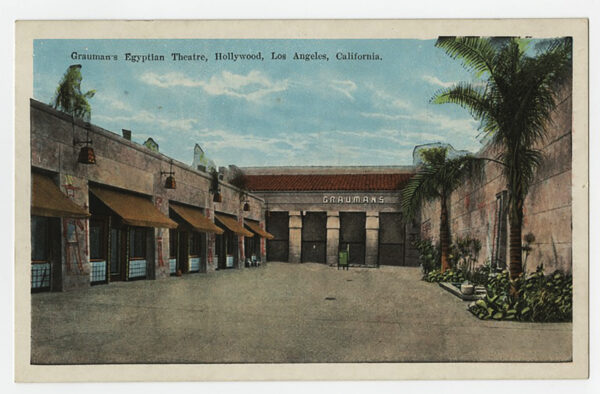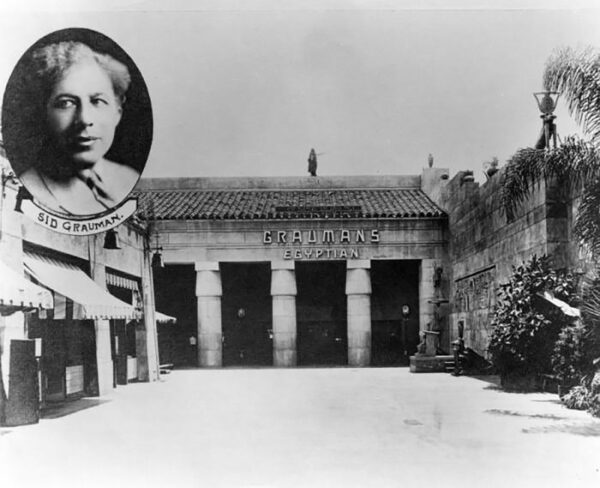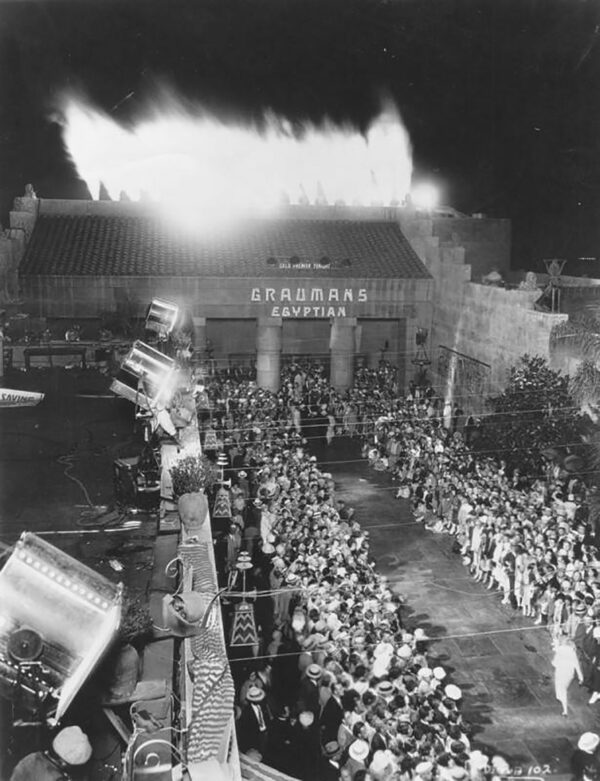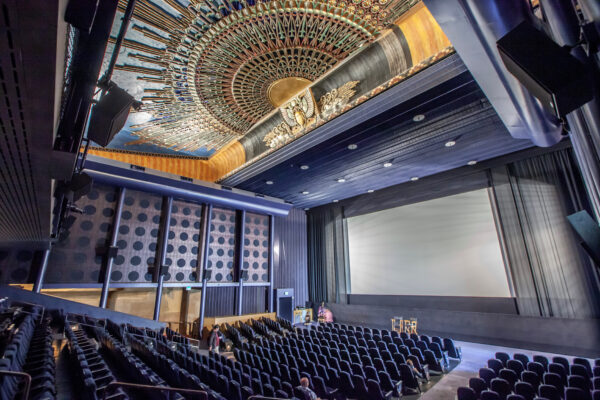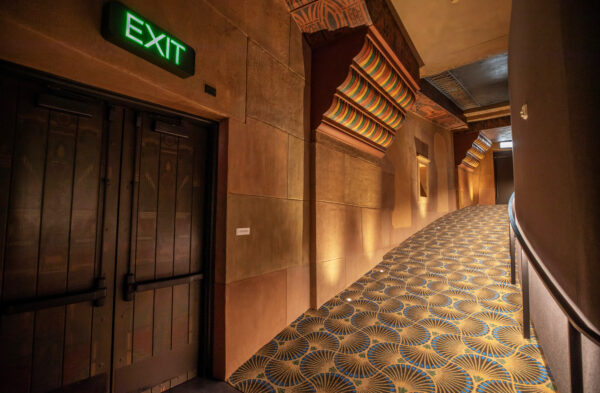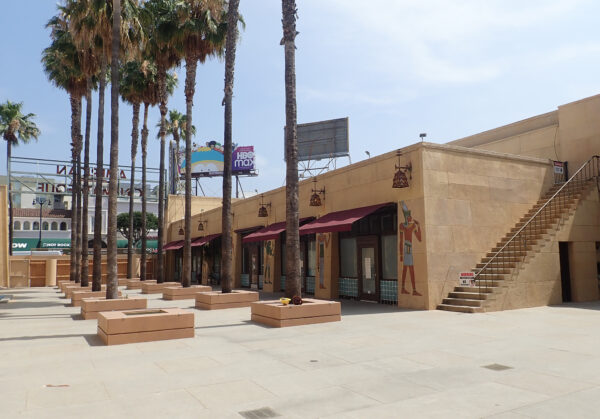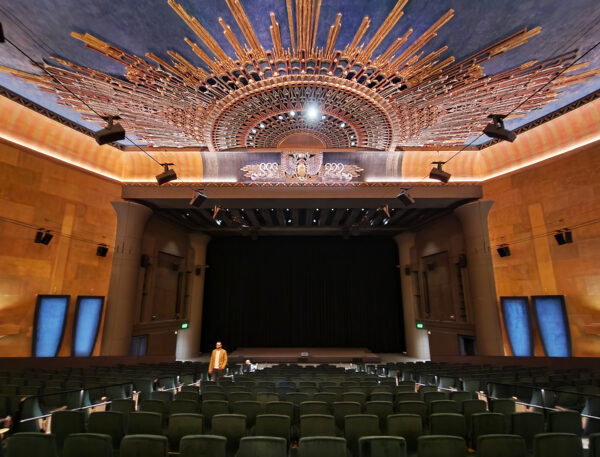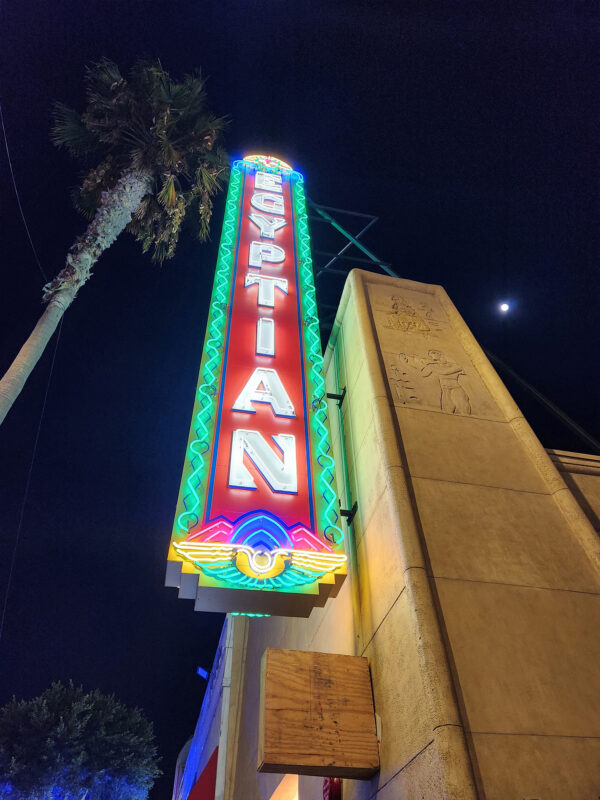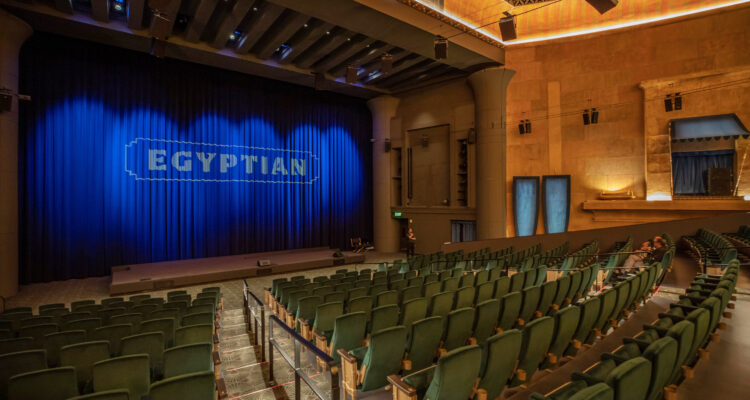
Place
The Egyptian Theatre
The Egyptian Theatre is one of the most significant cultural and architectural landmarks of Hollywood and cinema history.
Place Details
Address
Phone Number
Website
Year
Style
Decade
Designation
Property Type
Government Officials
Attributes
Community
Sid Grauman and Charles Toberman’s Egyptian was officially the first Hollywood movie palace. The historic Egyptian Theatre opened in October 1922, introducing red-carpet processions, klieg lights, glamour, and news cameras at movie premieres. The theatre expanded the original concept of a “thematic prologue” with stage show presentations by singers, dancers, and orchestra preceding screenings. Set pieces and decorations in the forecourt were themed to the movie exhibition—creating a show that started on the sidewalk, as architect S. Charles Lee (Tower and Los Angeles Theatres) would say. It was the first West Coast theatre to have the equipment for synchronized sound and music in 1926 and Technicolor.
The property was listed in the National Register of Historic Places in 1985 as a contributor to the Hollywood Boulevard Commercial and Entertainment. And, while it screened first-run films into the 1980s, the theatre suffered from deferred maintenance and substantial alterations.
Eventually, the property became vacant and suffered significant structural damage from the Northridge Earthquake in January 1994. While owned by the City of L.A.’s Community Redevelopment Agency, the non-profit American Cinematheque raised funds for repairs and additions, providing a screening room with leading-edge technology. The extensive rehabilitation by the American Cinematheque completed in 1998 saved the building and assured its continued use and accessibility to the public for the exhibition of motion pictures. The project earned recognition from the Los Angeles Conservancy, the California Preservation Foundation, and the National Trust for Historic Preservation.
Unfortunately, the property faced ongoing building and operational challenges. Then, in 2020, Netflix purchased the Egyptian and partnered with the American Cinematheque to provide for rehabilitation that will protect the building and its use for its second century.
This remarkable project was described as “the case study in reversibility” by Los Angeles City staff considering the ready removal of contemporary additions, exterior and interior. In most cases, reversibility is viewed as a theoretical concept. However, in this case, it was achieved by design in 1998 and successfully implemented in 2023. This opportune collaboration assured that an important landmark in Hollywood and American cinema would be maintained for another century, the American Cinematheque could continue its programming in a high-functioning home, and that Netflix would bring new programming, more attention, and new public audiences to the venue.
Today, the Egyptian remains a focal point on Hollywood Boulevard and an important place to experience cinema history. In 2024, this project earned the Conservancy’s Chair’s Award.
Owner/Developer/Project Lead: Netflix
Facilities Management: American Cinematheque
Architect (General): Studio 440
Architect (North Building): Gensler
Preservation Architect/Historic Preservation Consultant: Historic Resources Group
Contractor: Whiting-Turner
Construction Manager: Lincoln Property Company
Architectural Conservator: Silverlake Conservation
Structural Engineer: Structural Focus
Mechanical and Electrical Engineer: Syska
Noise & Vibration Major Building Systems Consultant: Veneklasen Associates
Lighting Design: Sightline Design Group
Geotechnical Engineer: Geotechnologies, Inc.
Preservation Contractor: EverGreene Architectural Arts
